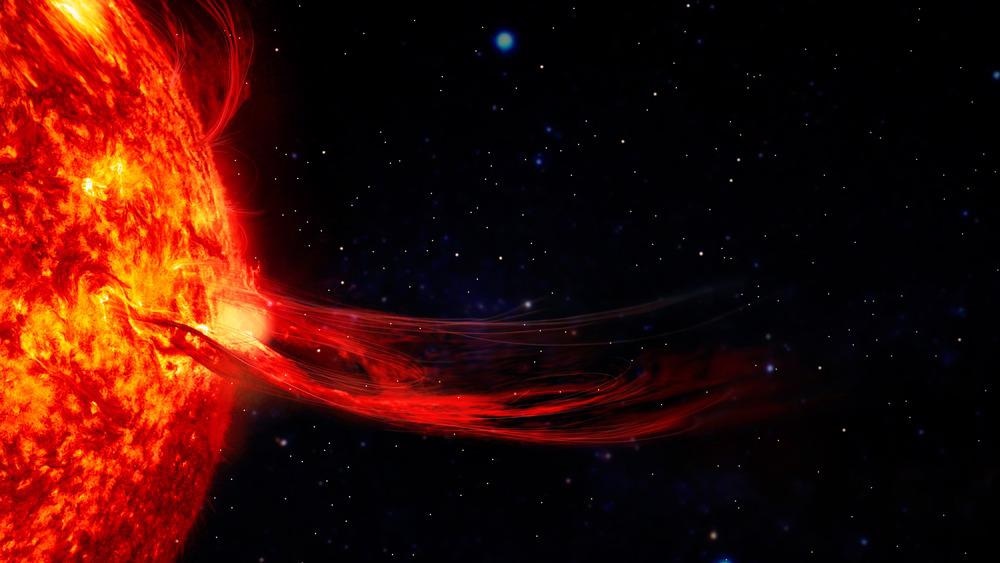
Title: University of Michigan’s ZEUS Laser Unleashes Unprecedented 2-Petawatt Pulse, Paving the Way for a New Era in High-Intensity Science
In a significant leap for technology and science, experts at the University of Michigan have completed the firing of the most potent laser pulse in U.S. history. The ZEUS (Zettawatt Equivalent Ultrashort laser pulse System) laser facility achieved an astonishing 2 petawatts of peak power – equating to 2 quadrillion watts condensed into an incredibly brief span of 25 quintillionths of a second. To give perspective, the ZEUS laser briefly produced over 100 times the total global electricity demand in an instant.
Located in a space the size of a high school gymnasium, ZEUS has effectively doubled the peak power output compared to any other operational laser in the U.S. This accomplishment not only extends the limits of what is technologically feasible but also opens up new avenues for exploration in medicine, national security, and fundamental physics.
Breaking New Ground in High-Field Science
“This achievement signifies the onset of experiments venturing into untapped domains for American high field science,” stated Karl Krushelnick, head of the Gérard Mourou Center for Ultrafast Optical Science, which manages ZEUS.
In contrast to earlier high-powered lasers that served singular purposes, ZEUS presents nearly unmatched versatility. Its modular architecture enables researchers to divide and customize laser beams to match their individual experimental requirements. This flexibility has already drawn global interest.
“One of the remarkable aspects of ZEUS is its capability to create multiple beams rather than functioning as a singular powerful laser,” remarked Franklin Dollar, professor at the University of California, Irvine. Dollar’s team is currently spearheading the first external research project at ZEUS utilizing the complete 2-petawatt capacity.
Chasing Particle Accelerator Performance – Through Light
ZEUS isn’t merely focused on sheer power; it’s about transforming the method of particle acceleration. Traditionally, colossal particle accelerators like the Large Hadron Collider extend for hundreds of meters. However, the ZEUS laser seeks to replicate similar particle energies within a space shorter than a basketball court employing wakefield acceleration techniques.
“Visualize electrons wakeboarding behind a strong light pulse in plasma,” conveyed Anatoly Maksimchuk, research scientist and head of ZEUS’s experimental areas. The laser interacts with helium gas, dislodging electrons from atoms and generating a plasma. These liberated electrons can ride the electromagnetic “wake” of the pulse to reach extraordinary energies, potentially achieving a 5-10 fold increase compared to current laser-driven accelerators.
Technical Specifications at a Glance:
– Peak Power: 2 petawatts (2 quadrillion watts)
– Pulse Duration: 25 femtoseconds (25 quintillionths of a second)
– Beam Focus: 0.8 microns – narrower than a red blood cell
– Laser Medium: Titanium-sapphire crystal (nearly 7 inches in diameter)
– Facility Footprint: Equivalent to a school gymnasium
The Path to Even Greater Power
ZEUS’s full scientific capabilities will be unveiled in its flagship experiment scheduled for later in 2024. This project will involve colliding high-energy electrons with laser light, resulting in interactions that mimic zettawatt-scale phenomena. These experiments provide insight into conditions similar to those present near black holes and neutron stars—objects that exist under extreme energy conditions rarely replicable on Earth.
Reaching this point was challenging. A significant obstacle was acquiring the vast titanium-sapphire crystal necessary for amplifying the ultimate laser pulse. “The crystal we are set to receive this summer will elevate us to 3 petawatts,” said ZEUS project manager Franko Bayer. “It took four and a half years to manufacture, and only a few crystals of this magnitude exist worldwide.”
Expanding Impact: From Medical Innovation to National Security
The immediate uses of ZEUS extend well beyond theoretical physics. Vyacheslav Lukin of the National Science Foundation, which provides funding for the facility, highlighted that the high-intensity laser will advance innovations in medical imaging and enhance cancer treatment techniques, alongside advancements in national security and materials science.
“As a user facility, ZEUS aims to broaden access to cutting-edge laser technologies,” Lukin pointed out. Research teams globally are invited to submit proposals for experiments, which are chosen through unbiased peer review—transforming ZEUS into a collective scientific resource rather than a proprietary research instrument.
A Nimble Giant: Agility Meets Extremes
In spite of its colossal energy output, ZEUS operates akin to an agile midsized laboratory. “It can accomplish tasks that larger national laboratories cannot perform swiftly or effortlessly,” noted John Nees, a University of Michigan scientist instrumental in its development. Since its inauguration in October 2023, ZEUS has already hosted 11 major experiments involving 58 researchers from 22 institutions.
ZEUS’s capacity to adapt and rapidly upgrade has facilitated